24 Hours In Bengaluru: A Guide For Culture Lovers
On a short trip to Bengaluru there is a lot to see and do. Too much for 24 hours, but as travelers we must sometimes do our best to see what we can in the time available.
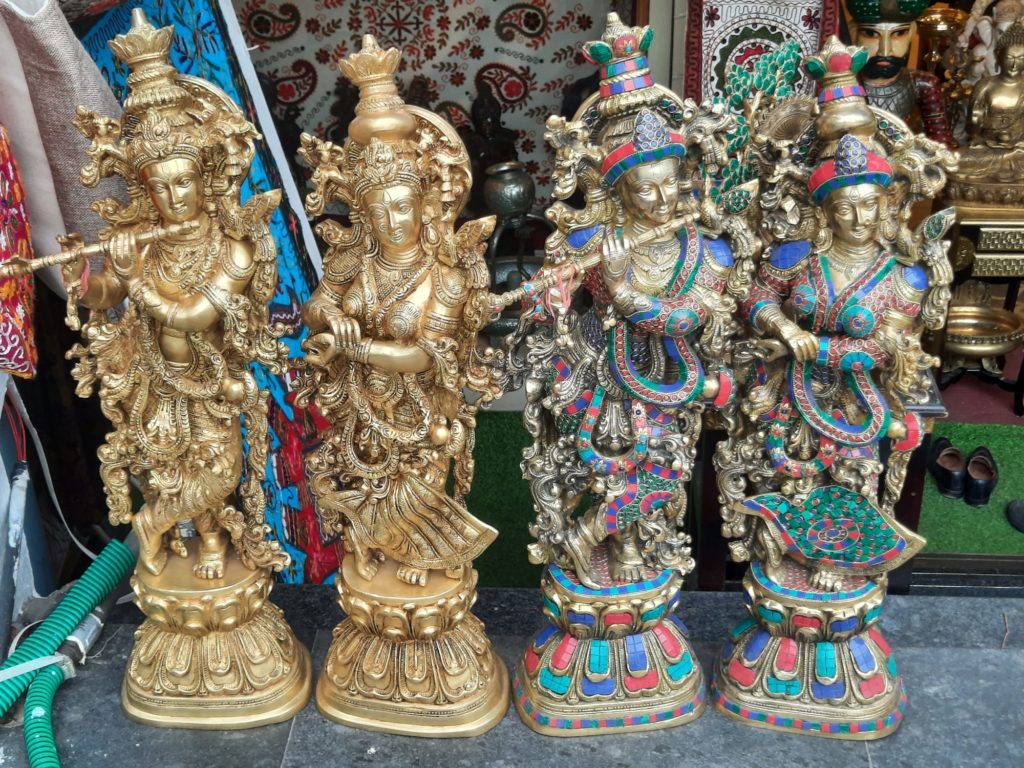
24 Hours In Bengaluru
In our last post, we tried to catch a glimpse of Hyderabad old and new between business meetings. No mean feat, but possible with the right attitude. Today’s post takes us to Bengaluru (which the British called Bangalore), another of India’s major tech cities and thus the second stop on my trip. This time I had a little more free time to explore: the best part of a weekend, in fact.
From previous experience in India, I knew that I would get the most out of my trip if I used the services of a tour guide. Sometimes it’s nice forging your own path, but if you’re in a new place and have limited time, a guided tour is a great way to see a few key sights and find out about the history and culture of a place. My tour guide, Shama, was knowledgeable and flexible. After arriving in Bengaluru on a Saturday morning, we did an afternoon walking tour with her, followed by a half day tour starting bright and early the next day. If you would like to follow in my footsteps, I believe this is one of her tours here.
Now for Bengaluru. Bengaluru, with over 8 million inhabitants, is the largest city in the southern Indian state of Karnataka. It’s actually the 27th largest city in the world, too. It was established as a mud fort by Kempé Gowdā in 1537 (although evidence of settlement in the area goes back as far as the 9th century). Later rulers included Mughals and the British East India Company. Bengaluru today has a booming economy, partly thanks to its status as India’s largest software exporter. It’s also a sports hub.
Let’s take a look now at some of the things to see and do during 24 hours in Bengaluru.

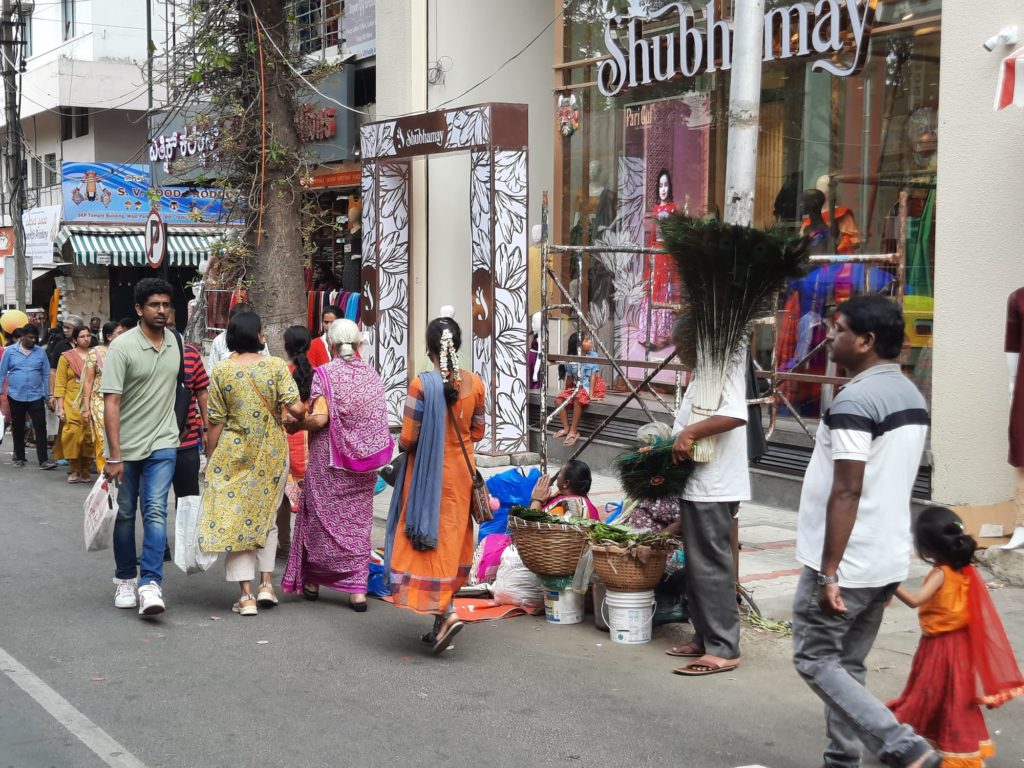
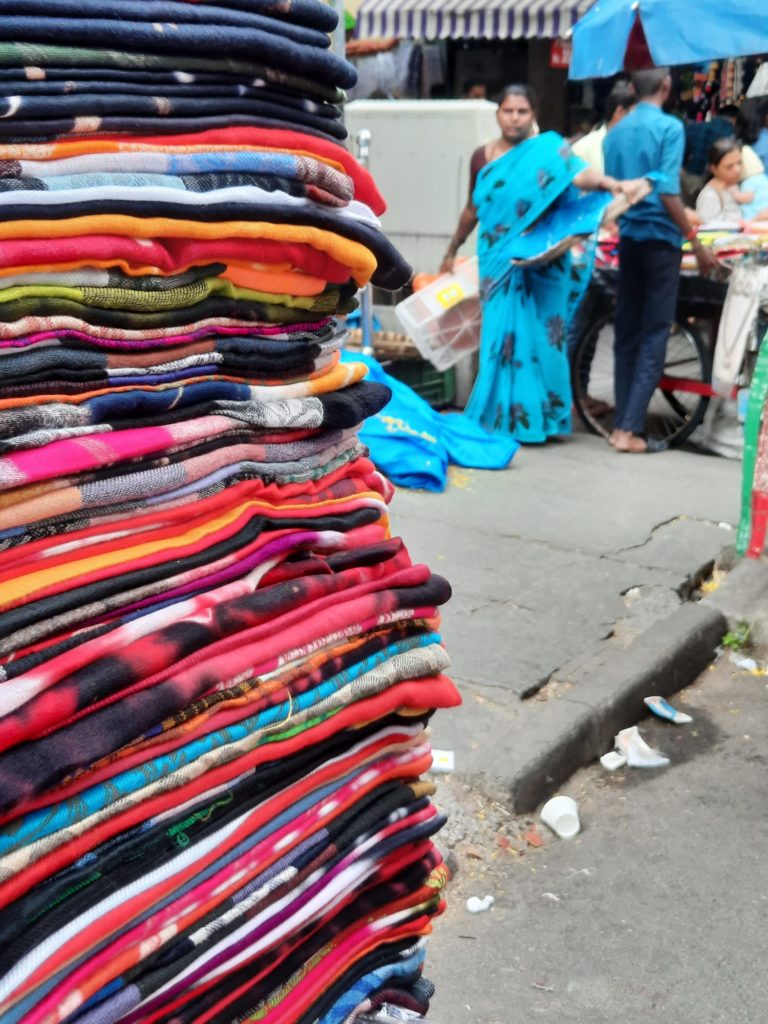

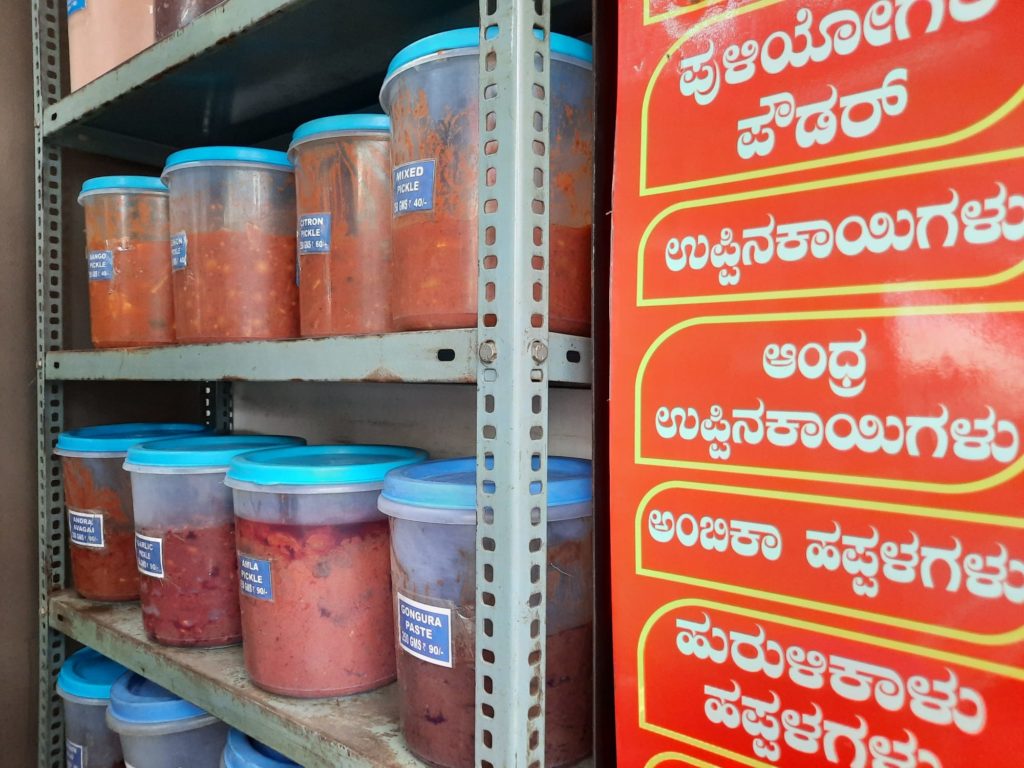
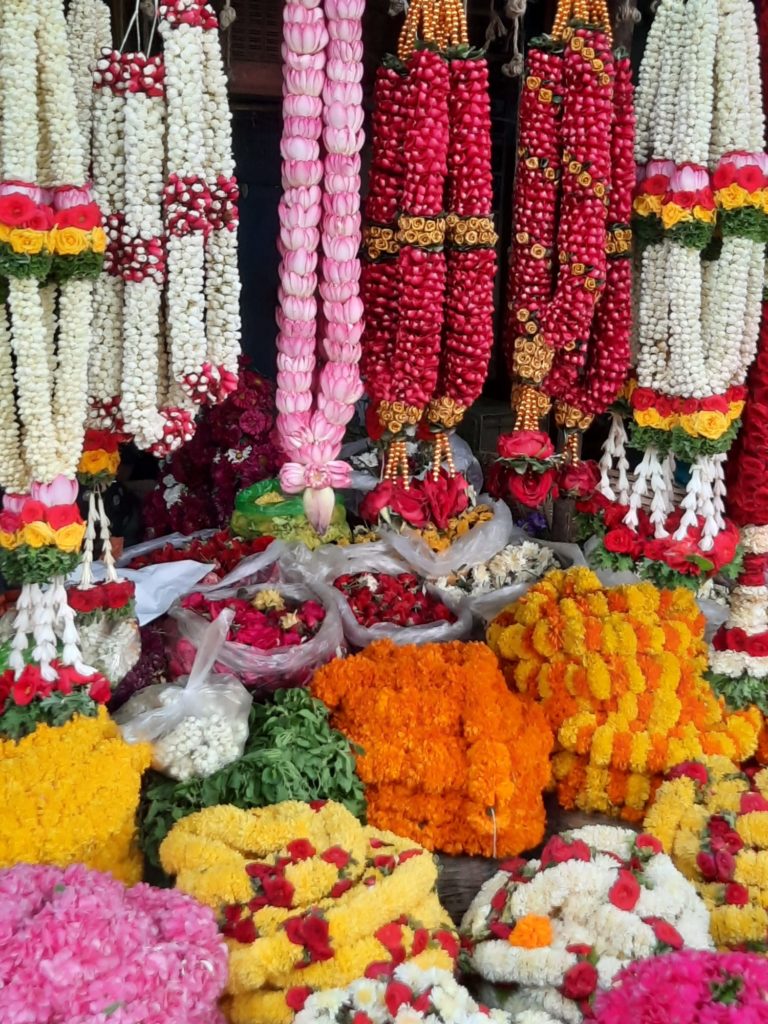
Get Your Bearings On A Walking Tour
As I mentioned above, my 24 hours in Bengaluru was split across two days, so I started with an afternoon walking tour. This tour took me around the neighbourhood of Malleshwara, a good place to get a sense of Bengaluru as a whole. Malleshwara, or Malleshwaram, is well-located for visitors coming from the tech city of Whitefield. It’s also close to Bangalore Palace (more on this below). A planned neighbourhood in response to a late 19th Century plague outbreak, it has many points of interest on its orderly streets.
We began by taking in a street market. One thing I really liked about Shama’s guiding style was that she takes you to places frequented by locals, and then makes sure you’re not in the way. She would find us good spots to stand without blocking traffic or anyone’s business, a detail I greatly appreciated. We were therefore able to wander at leisure around fabric stalls, fruit sellers, flower vendors and more. During this walk, Shama told us more about the city’s history. For instance that the city’s name is said to derive from ‘town of boiled beans’, or peanuts. Or that it has many lakes, constructed by Kempé Gowdā to meet the growing population’s water needs.
A walking tour was a great way to get to know Bengaluru at a gentle pace. As well as the street market, we saw a couple of temples, and stopped for a coffee/chai at a local shop. We got a sense of the colours, smells and sights of Southern India, and were also able to discuss what we would see the next day on our wider-ranging tour. A perfect start.
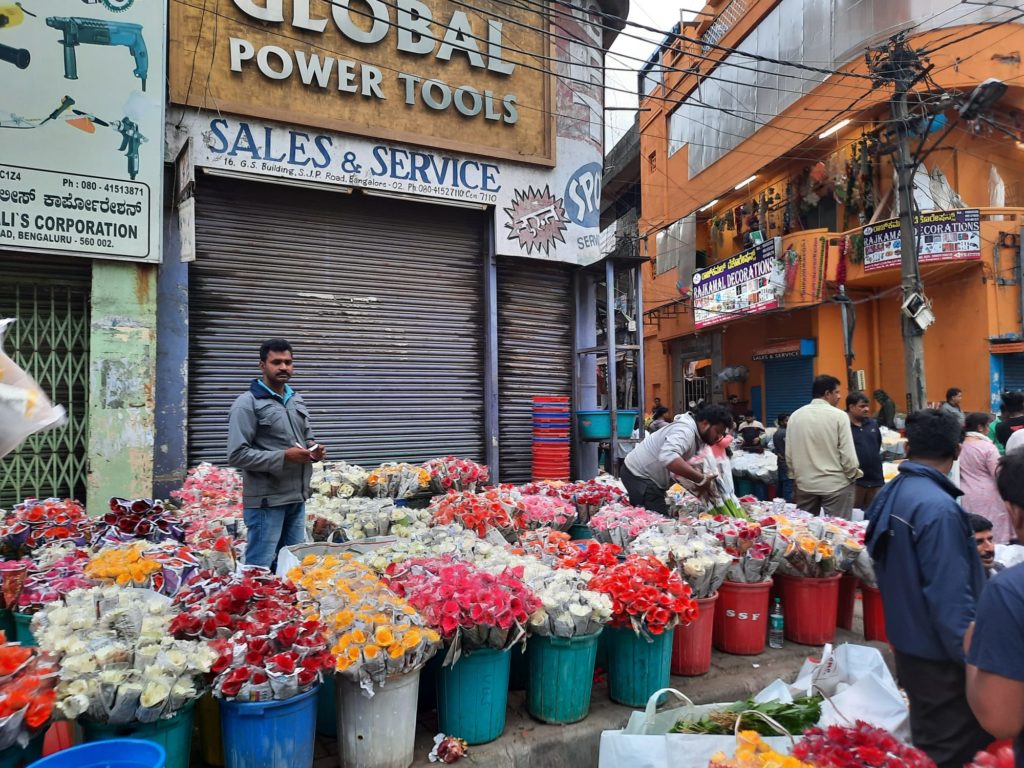
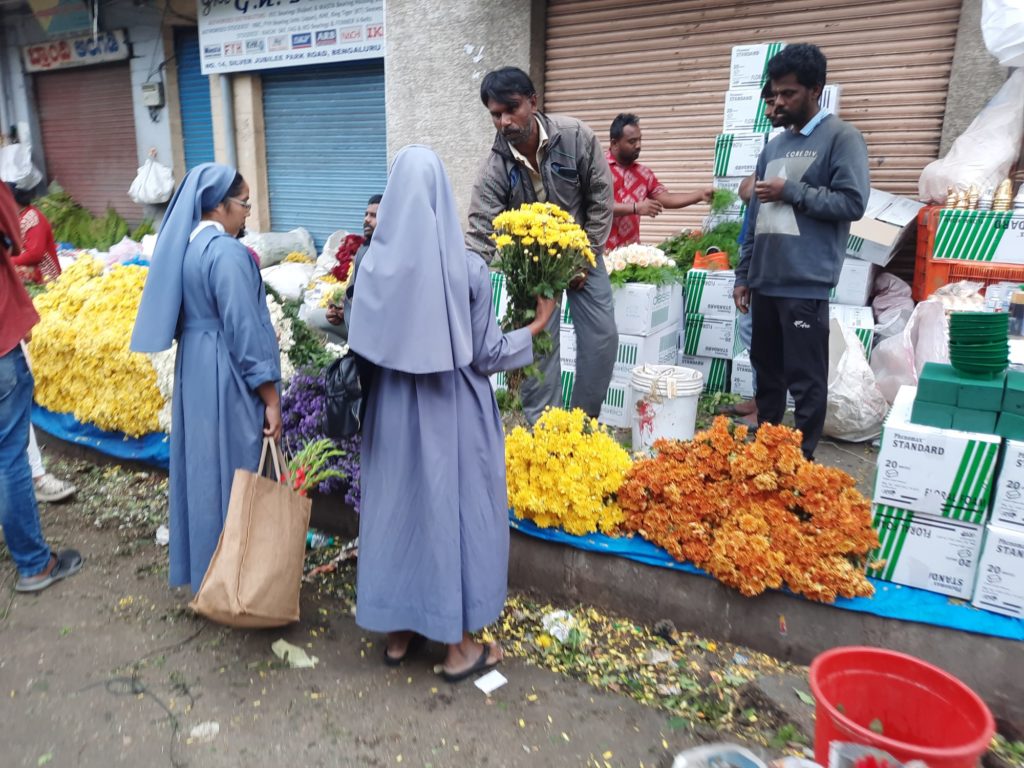
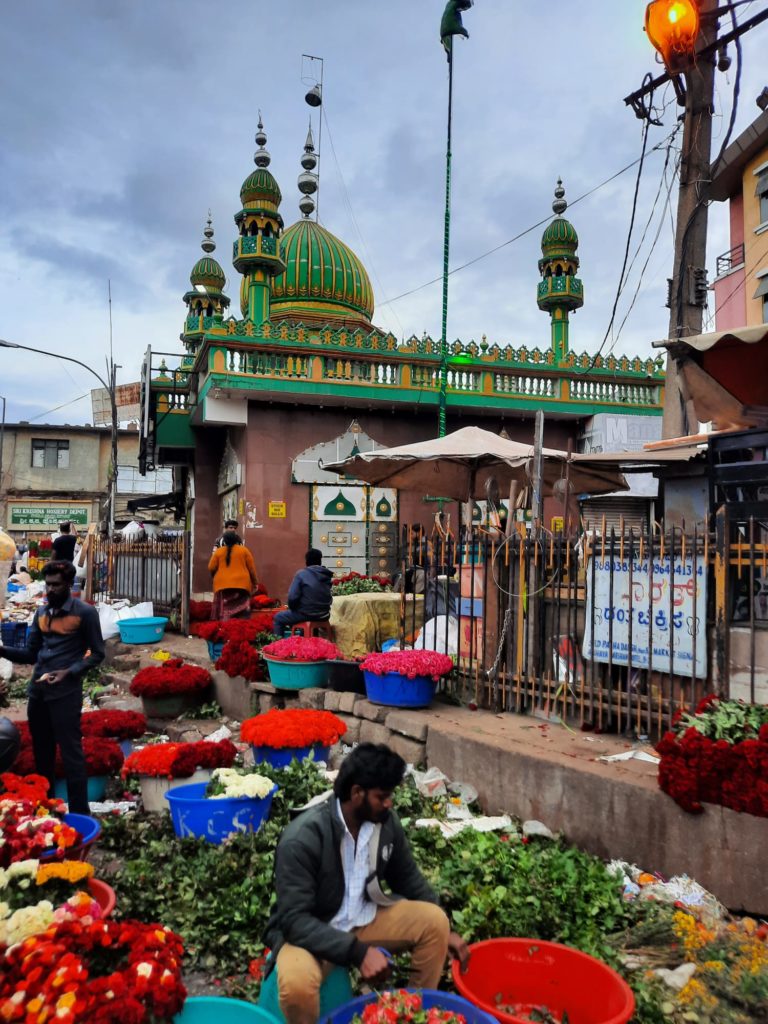
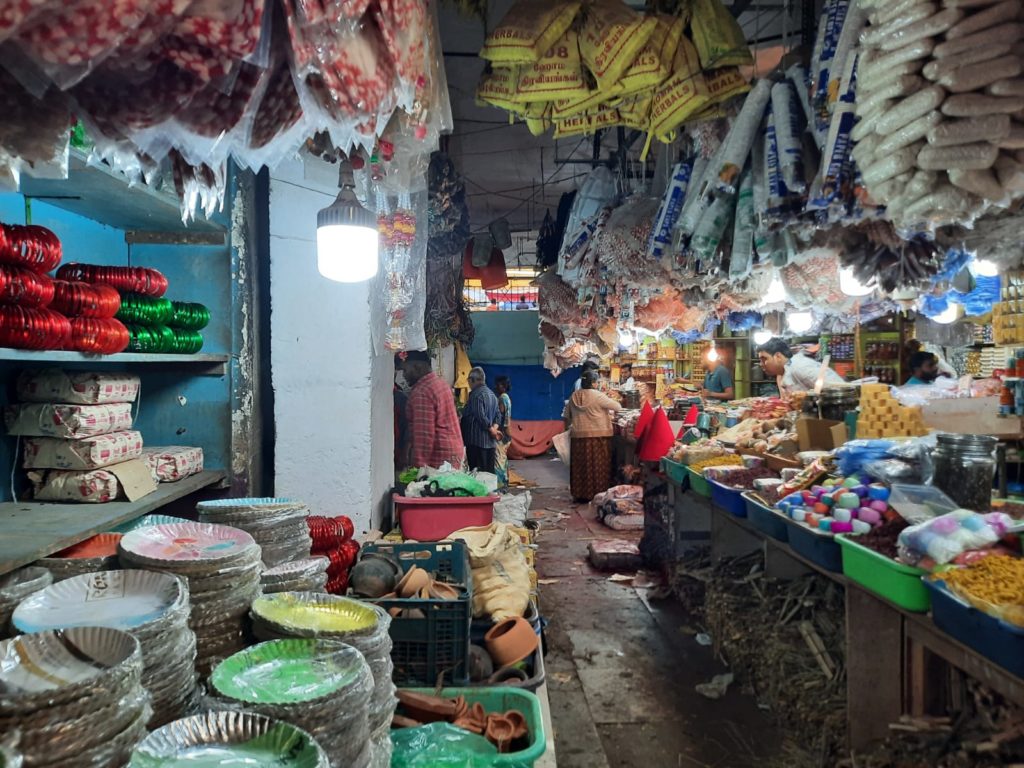
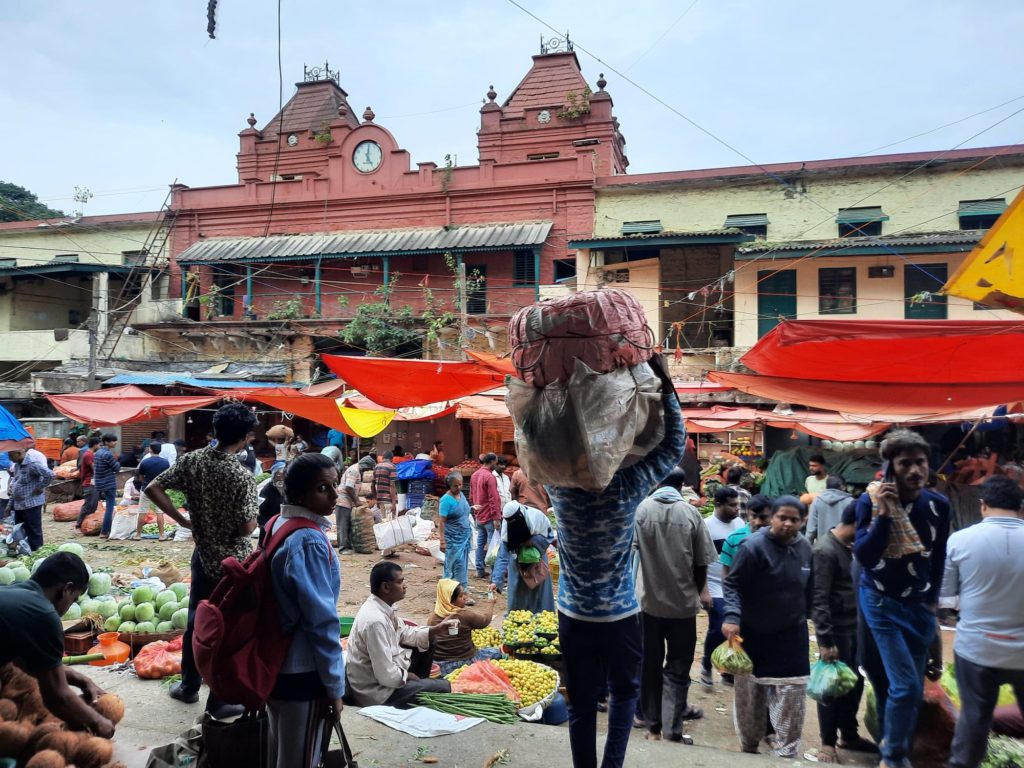

K. R. Market
Krishnarajendra Market, known as K. R. or City Market, is Bengaluru’s largest wholesale market. It is here that we started our half day tour, bright and early at 6 AM the following day. We were here early to see the flower sellers, who generally sell their wares and depart by breakfast time.
The market is named after a former ruler of Mysore/Mysuru (the same princely family still have palaces in Mysuru and Bengaluru, just without the royal authority). It opened in 1928. Two Colonial-era buildings remain, as well as a large 1990s extension.
If you haven’t been to a busy market in India before, K. R. Market is an almost overwhelming experience. It’s packed with shoppers buying on both a commercial and personal scale, as well as vendors hawking and hauling their products. We spent a good while walking through the flower section of the market, before heading indoors to where fruits and vegetables are sold.
What does K. R. Market tell you as a visitor to Bengaluru? Well, something about local life and customs, for a start. Flowers are still very important in many rituals in India. You will see certain varieties again and again, either sold in bulk or worked into wreaths and garlands. You also get a sense of the scale of commerce for many locals. And can see the connection between city and countryside: farmers arriving with ox-drawn carts, for instance, selling to vendors who sell to the public. More than just a sensory explosion, then: an insight into local life that you won’t get if you stick to Westernised hotels and offices. Worth the early morning start!


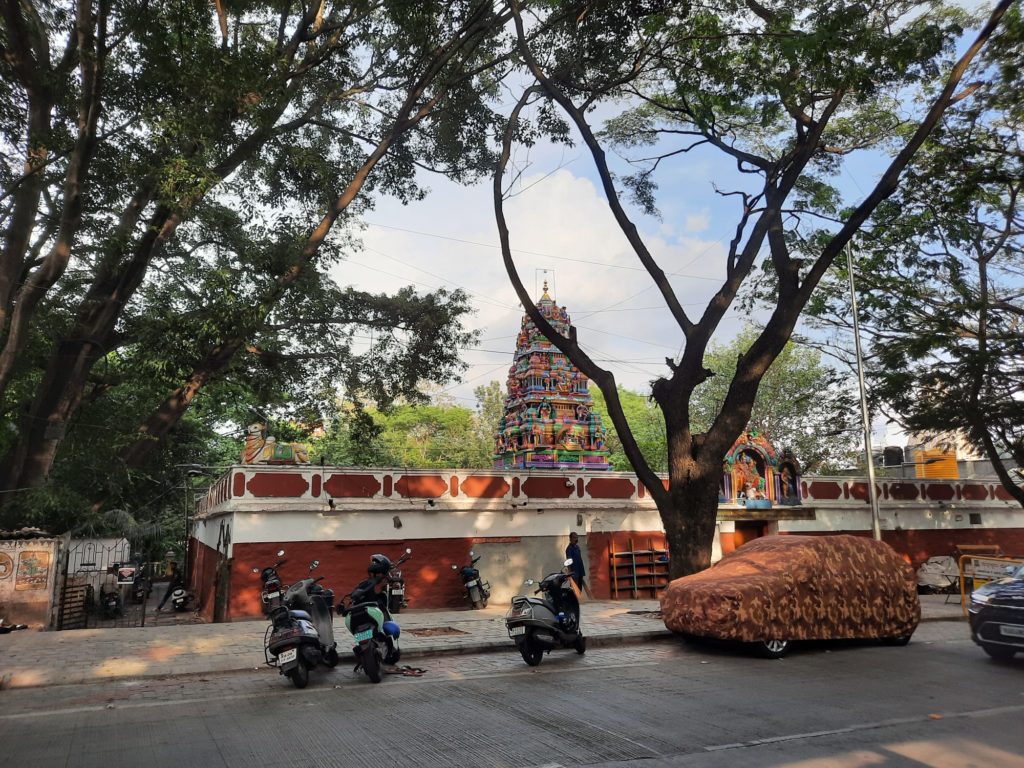



Temples
It’s very likely that you will experience some temples during 24 hours in Bengaluru, either from the outside or a closer vantage point. During our walking tour in Malleshwara we could hardly fail to notice a couple of temples. We didn’t go inside any during that first day, but had the opportunity the following morning.
Temples in Southern India and Karnataka are colourful, with ornate carvings on their pyramid-shaped structures. They often sit inside a large complex, and have vibrant cycles of daily worship and regular ceremonies.
On our second day in Bengaluru we visited two interconnected temple complexes: Shree Dodda Ganapathi Temple and Sri Big Bull Temple. The former is dedicated to Ganesha, and the latter to a Hindu demi-god in the form of a bull, Nandi. An apocryphal story states that the bull temple complex was once land belonging to a peanut farmer. One day a bull wandered in and began eating the farmer’s crops. In despair the farmer rushed inside, not knowing what to do. When he emerged once more, the bull had been turned to stone and the remainder of the crops were saved. Today this is apparently the largest temple to Nandi in the world, with an enormous peanut festival held here each year.
Both the statue of Ganesha and that of Nandi are regular lathered in butter or oil. Perhaps this nourishment has something to do with their apparent growth: both are believed to have reached their present sizes miraculously, with plans to extend the Nandi temple in future if the statue continues to grow.
Respectful visitors are welcome in Hindu temples. Just ensure you are modestly dressed and do not interfere with anyone’s worship. Typically photos are not allowed inside the temples themselves.

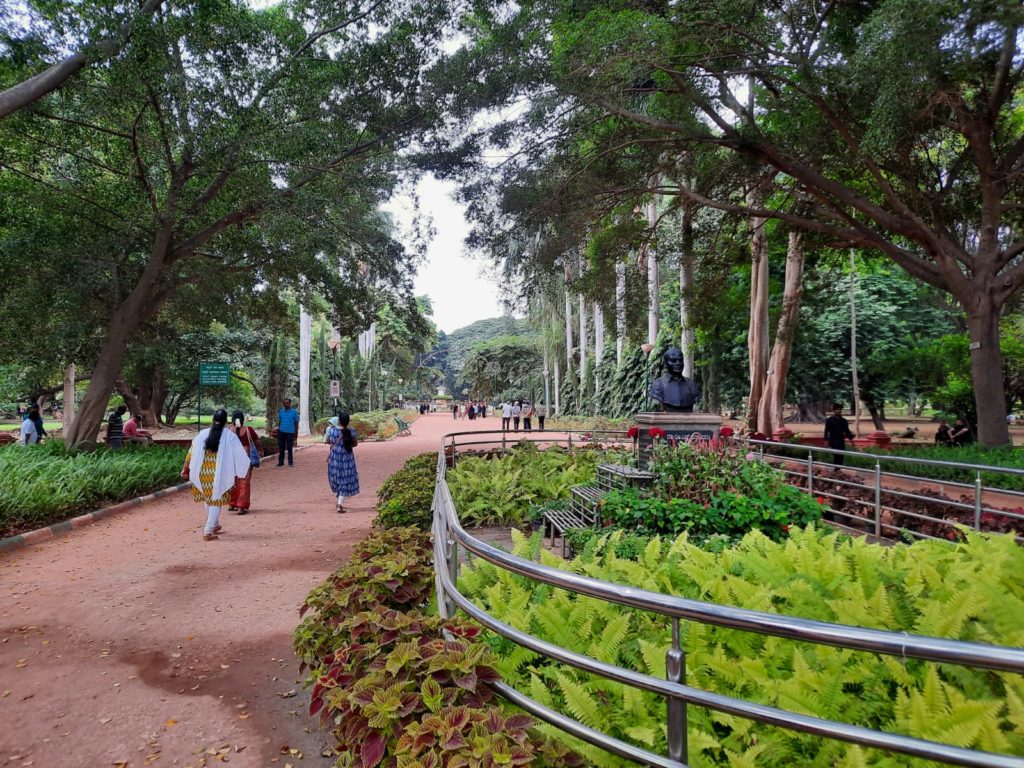
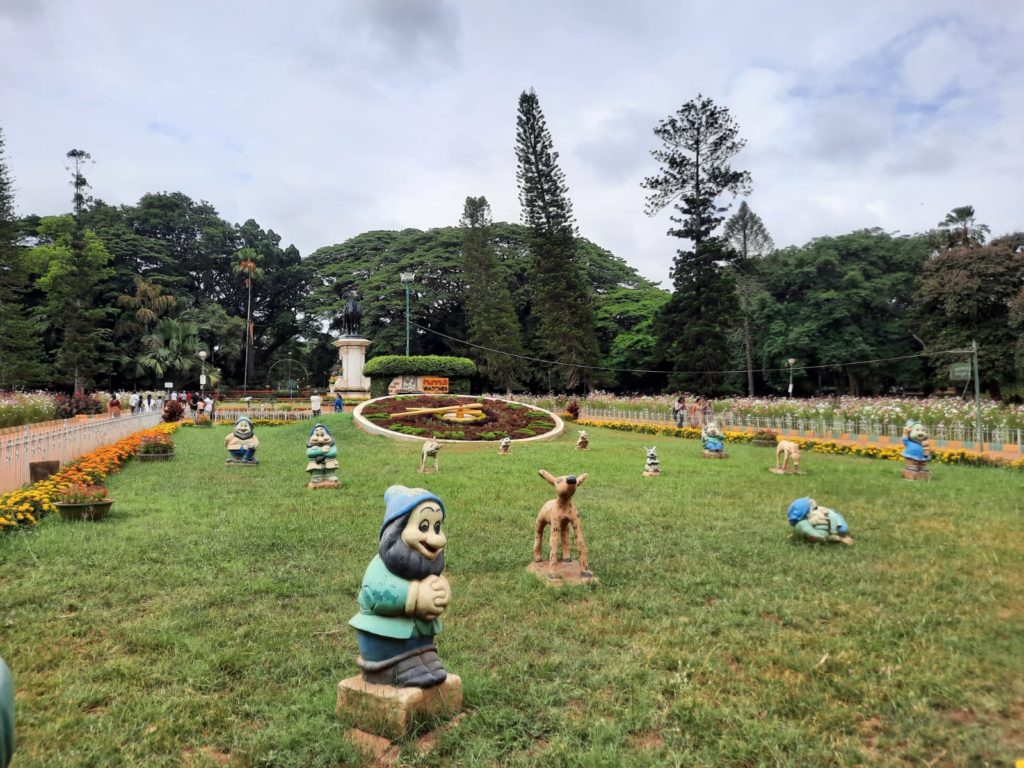

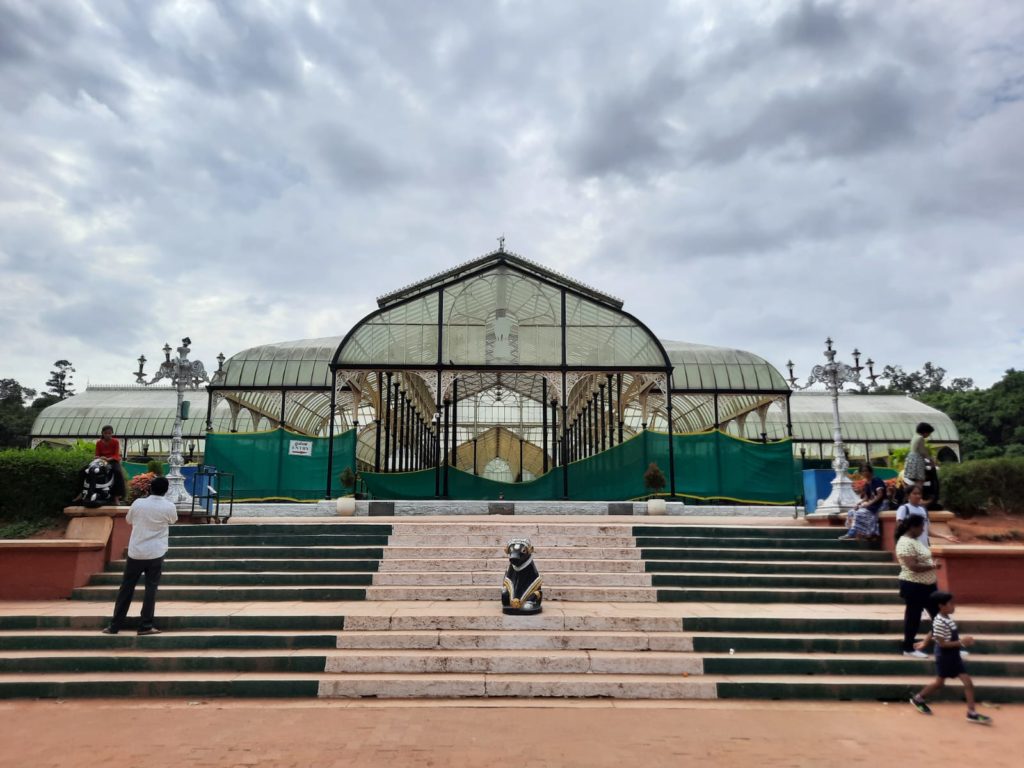

Lal Bagh
The next stop on our tour of Bengaluru was Lal Bagh (‘red garden’). This botanic garden was commissioned by ruler of the Kingdom of Mysore Hyder Ali in 1760, and completed by his son Tipu Sultan. The British obviously love a botanic garden so further developed it over the years into the pleasant public green space we see today.
For visitors to Bengaluru, Lal Bagh is interesting primarily for its different layers of history. No traces remain of the original 18th Century garden. Plenty of Victoriana is evident, however, from a glass house used then and now for flower shows, to India’s first lawn clock. More curious modern additions such as Disney lawn ornaments show how Lal Bagh has continued to provide family entertainment. And sculptures carved from old trees felled by severe storms carry a more modern ecological message.
I think Lal Bagh is probably best for those with a little more time to explore Bengaluru. If you have limited time, there are other sights to see which feel more unique to the area. But we had a pleasant walk here nonetheless, leaving via the exit which afforded us a view of the Lalbagh Rock, among the most ancient rock formations on Earth (which we didn’t know at the time or might have made more of).
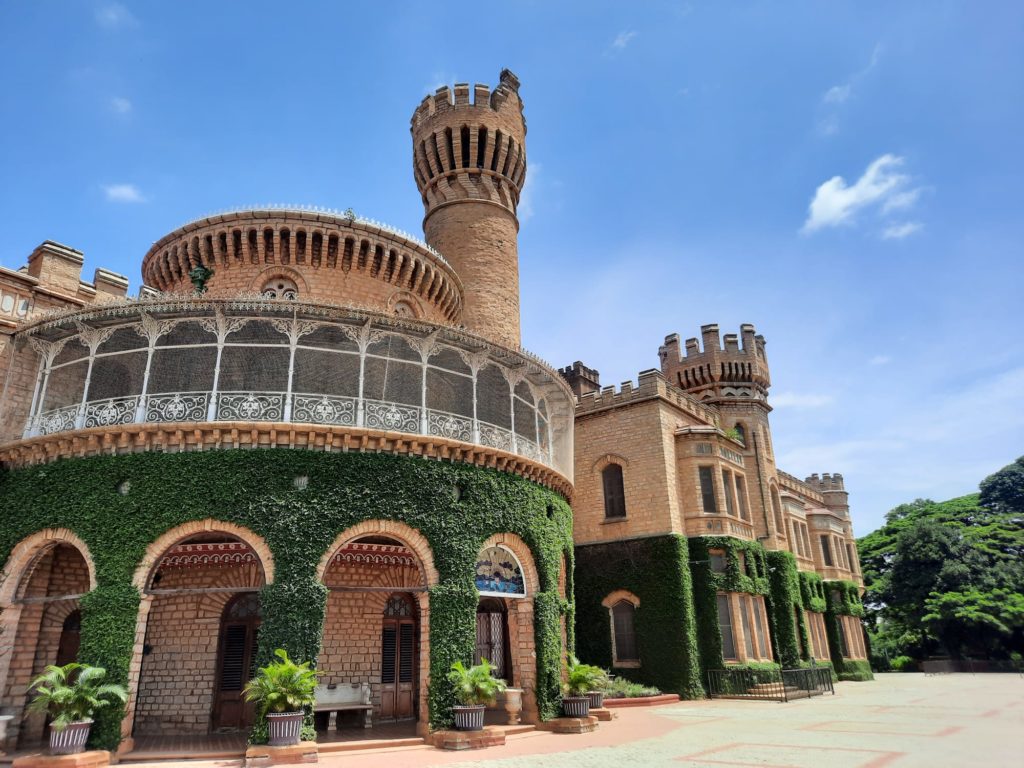

Bangalore Palace
I’ve gone with Bangalore rather than Bengaluru Palace as this seems to be the standard naming convention. Bangalore Palace still belongs to the local royal family, although they prefer their palace in Mysore/Mysuru so don’t live here. Like Lal Bagh, Bangalore Palace is primarily interesting to the culturally or historically-minded visitor as a study in layers of history.
The Indian subcontinent was home to hundreds of royal families at the time the British seized power. Around 175 states then operated under a model of suzerainty (internal autonomy but no control over foreign policy or relations) while about 500 became dependents of provincial governments. In most cases this meant in practice that royal families retained titles, but without genuine power and with reduced incomes.
The effects of this are evident at Bangalore Palace in a number of ways. For instance multiple businesses operate from the grounds: mainly wedding halls (huge business in India) but also an amusement park. A modern solution to securing an income for various royal family members. The interior of Bangalore Palace is also less refined than the exterior would suggest. Decoration schemes are not always finely executed, for example. And the painting collection contains some works of dubious quality and others in disrepair. This is partly a question of climate, but also points to the financial difficulty of keeping up these properties. A story not unlike England’s stately homes, but a different manifestation of the challenges.
Being a royal residence, the experience of visiting Bangalore Palace is quite formal. Plenty of security, no photos inside, and a one-way system in place. You will have to make do, therefore, with a couple of images of the Windsor Castle-inspired exterior.
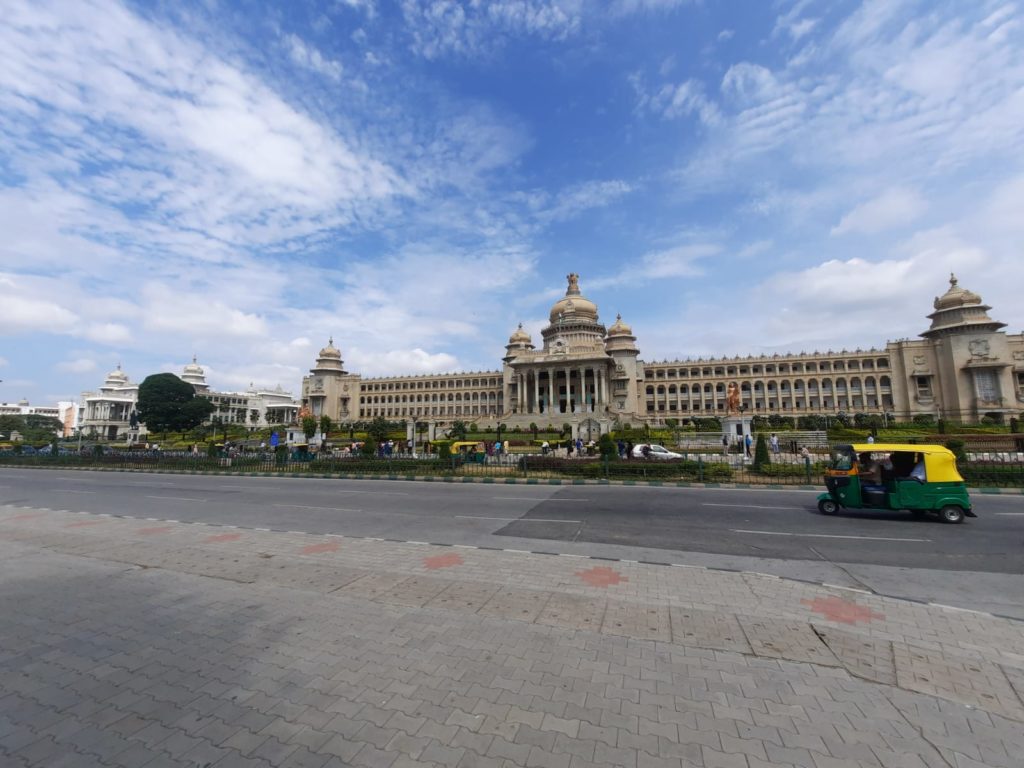


Other Sights
Perhaps you’ve read through this guide so far and wondered how you would curate your own 24 hours in Bengaluru. That’s ok – this section is here to help! As with any major city there’s a lot more to see and do than you could pack into a day, so you have to pick and choose according to your tastes. Here are some highlights from the list of places the Salterton Arts Review either didn’t get to, or spent less time at.
- Tipu Sultan’s Summer Palace: this would be top of my list if I returned to Bengaluru in future. Close to K. R. Market and dating back to the time of Kempé Gowdā, there is both a palace and a fort to visit at the site. It’s a great example of Indian Islamic architecture.
- Vidana Soudha (top image above): most visitors won’t be able to visit inside the the Legislative Chamber of Karnataka, but stopping for photos outside this impressive building is still a popular activity. Opened in 1956, it’s an example of post-independence, neo-Dravidian architecture.
- Kempé Gowdā Towers: our friend Kempé Gowdā created watchtowers at the boundaries of Bengaluru. They are at Lal Bagh (at the top of that rock we saw), Kempambudhi Tank, Mekhri Circle and Ulsoor. A replica of one, atop a granite column, is in the third image above.
- National Gallery of Modern Art: open since 2009, this is the third such national gallery after ones in Delhi and Mumbai. More information here.
- Lakes and Tanks: back to Kempé Gowdā once more, whose influence is never far away in Bengaluru. Kempé Gowdā created hundreds of lakes around his new settlement, to supply water. Some have since disappeared but many still exist, some of which you can still visit. Where a lake has ‘tank’ in its name, it’s generally part of the water supply (or has been). The second image above is of Sankey Tank, which offers boating, a swimming pool, and well-maintained plantings.
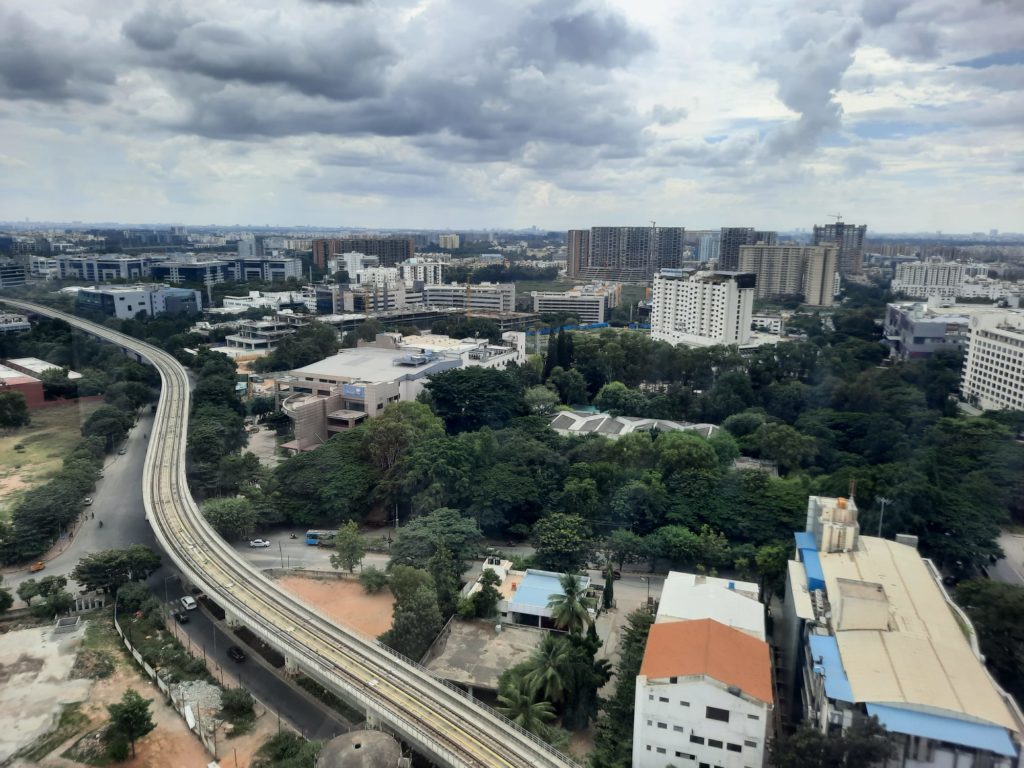
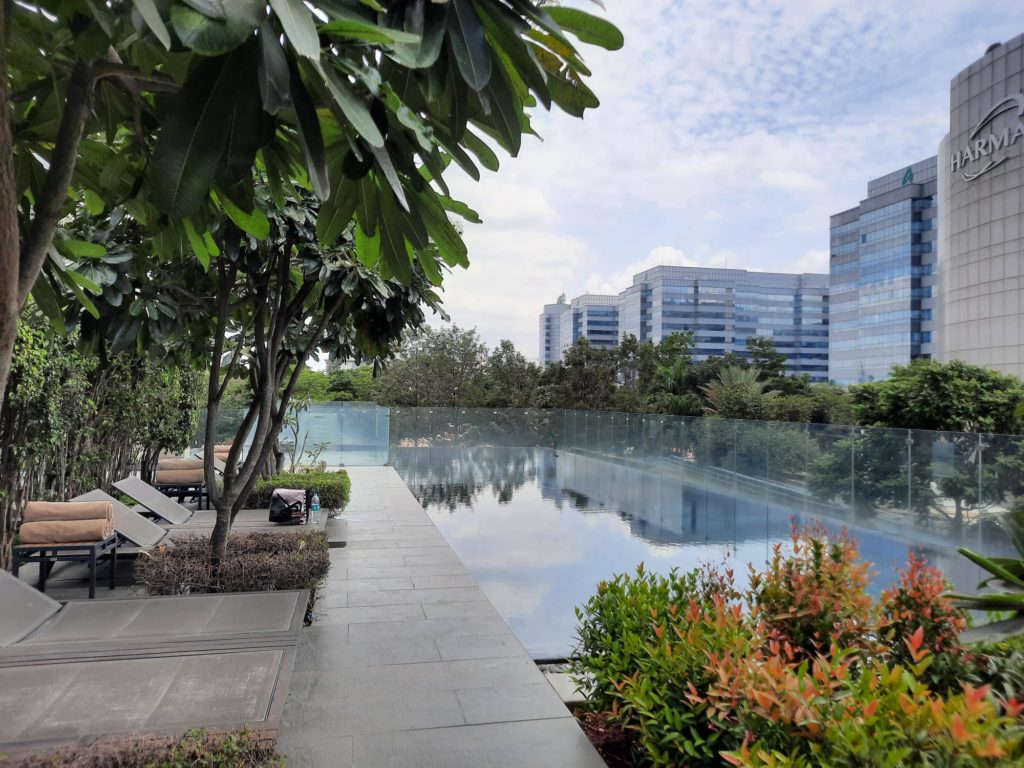
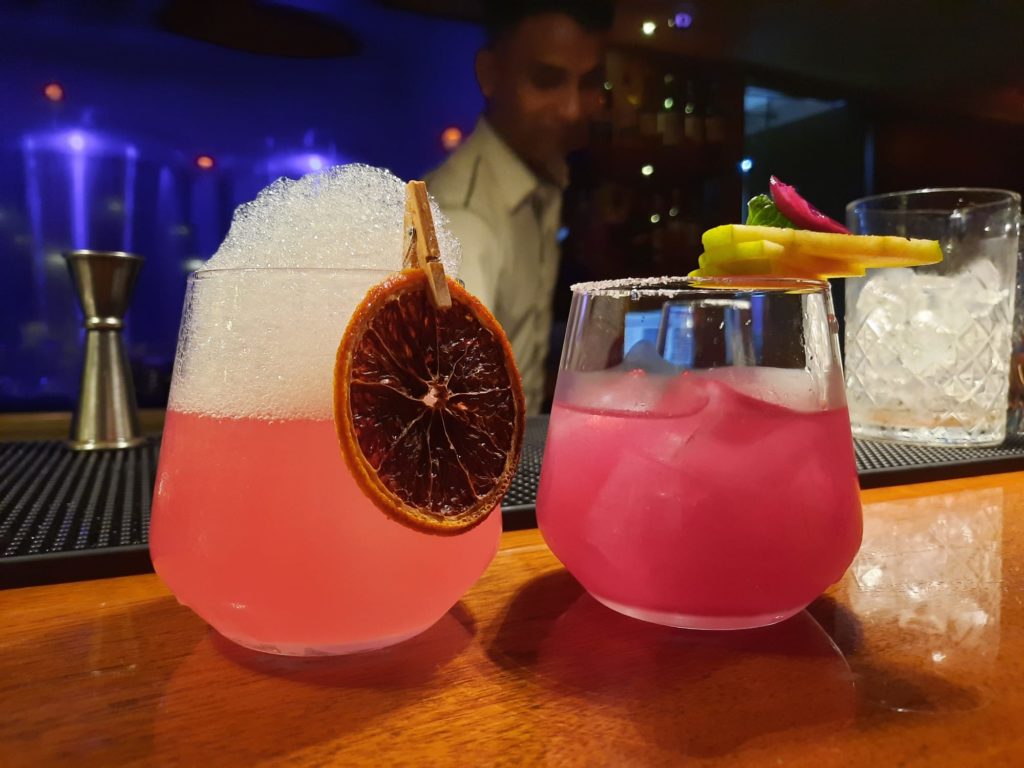

Bonus Section – Whitefield: Bengaluru’s Tech City
In our guide on Hyderabad, we had the city’s tech area, Hi-Tec City or Cyberabad, as a base. Similarly, in Bengaluru, the Salterton Arts Review was based in Whitefield, South-East of the central city and with a high concentration of IT company campuses. There are similarities and differences: Whitefield is greener and a little more low-rise than Cyberabad, but both have new infrastructure, nice hotels, and good restaurants.
There is not much in the way of tourist sights and activities in Whitefield. If you like shopping, there are plenty of malls. You can visit temples like Sri Lakshmi Narayana Swamy Temple. Or there’s the Jagriti Theatre for performing arts. I very much enjoyed my time in Whitefield, but did none of those things. Instead, I recommend trying out rooftop bars for the views, picking some good restaurants, and relaxing and enjoying your hotel for a while if you’re based here during your time in Bengaluru.
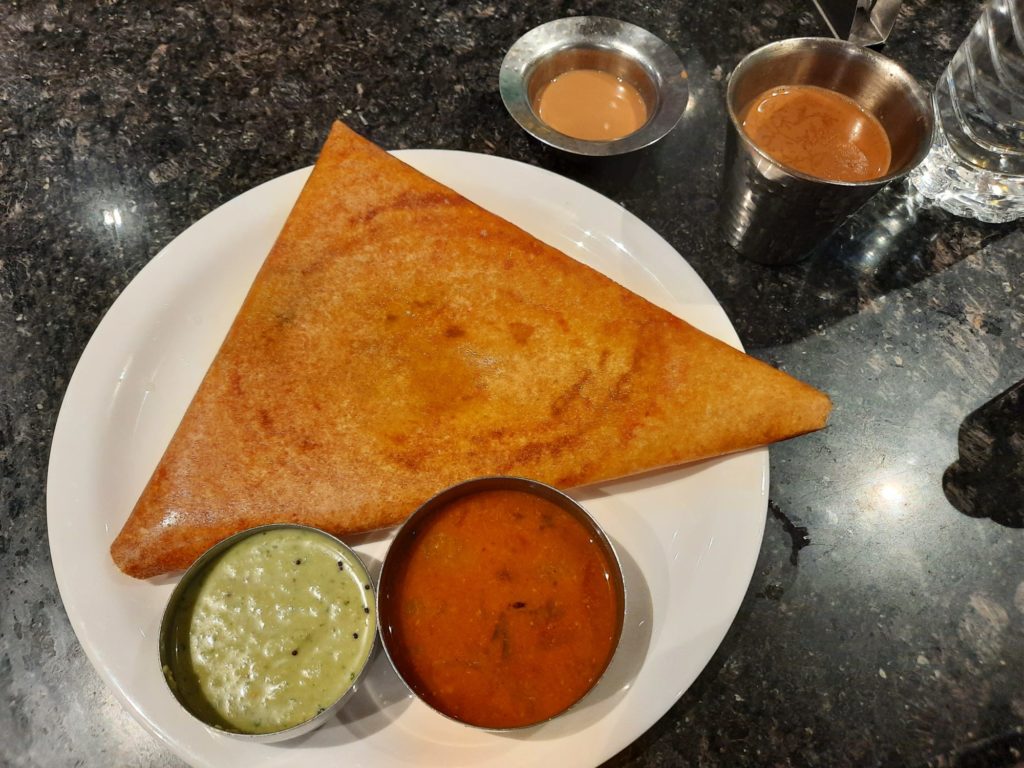
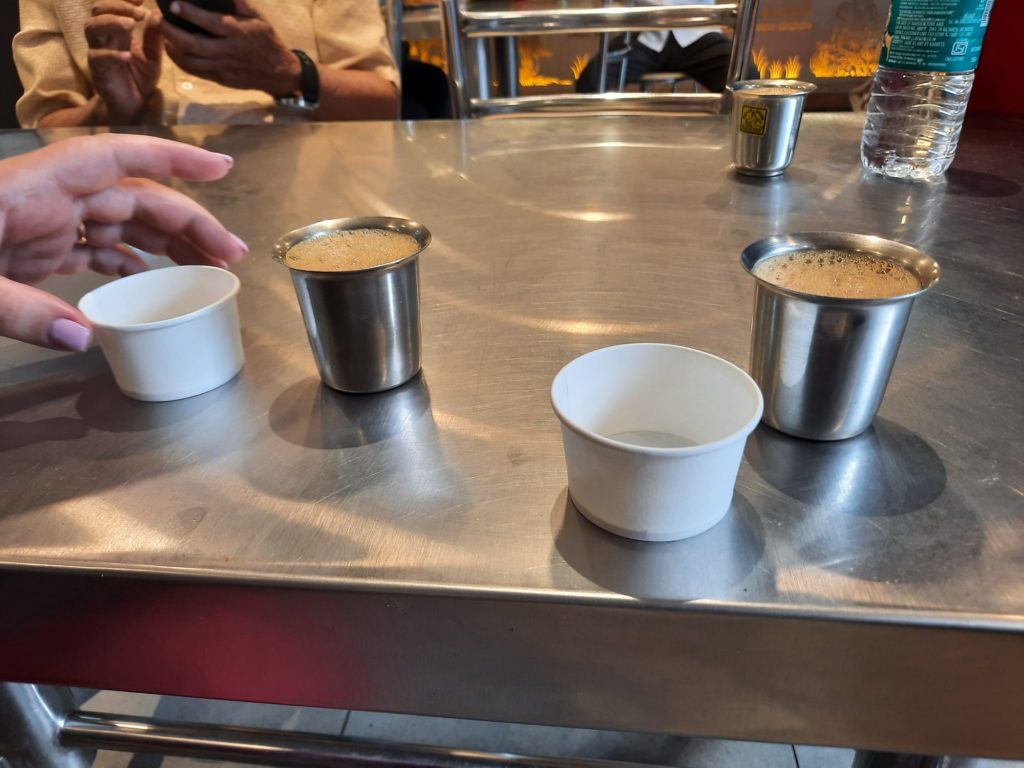
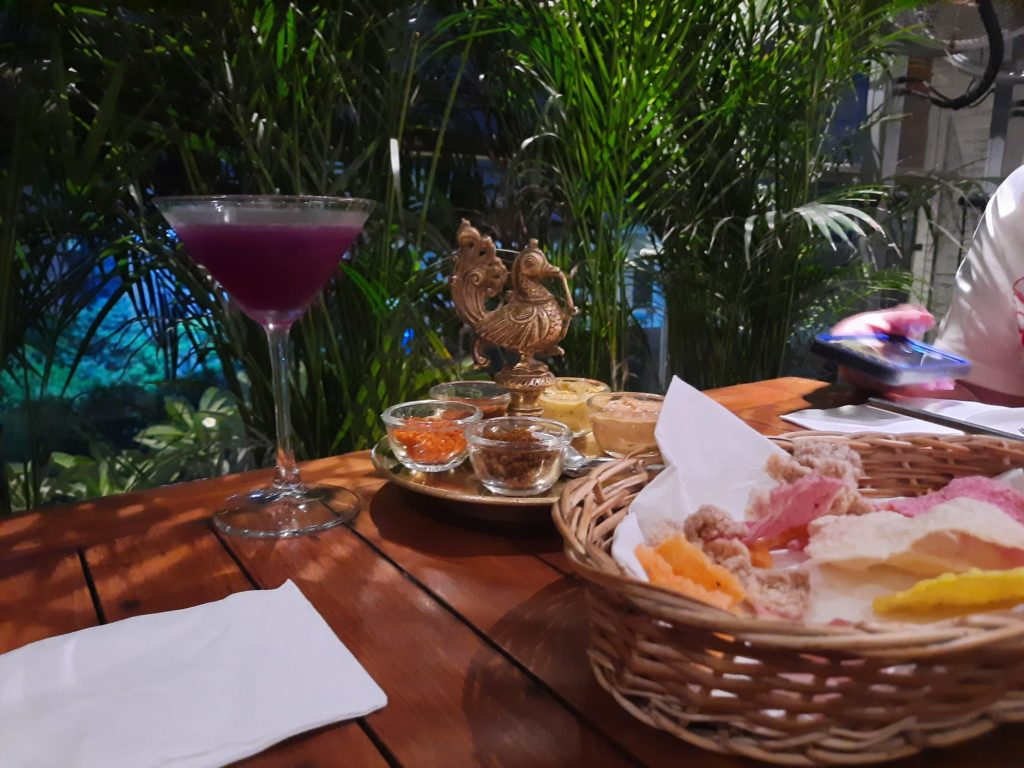

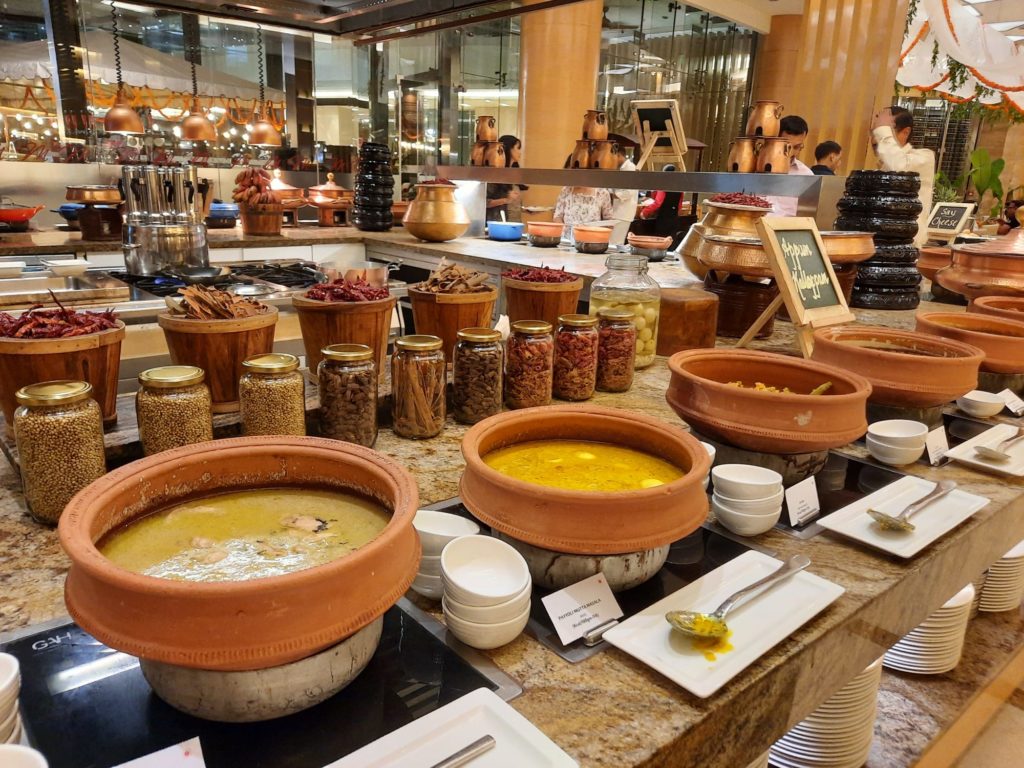
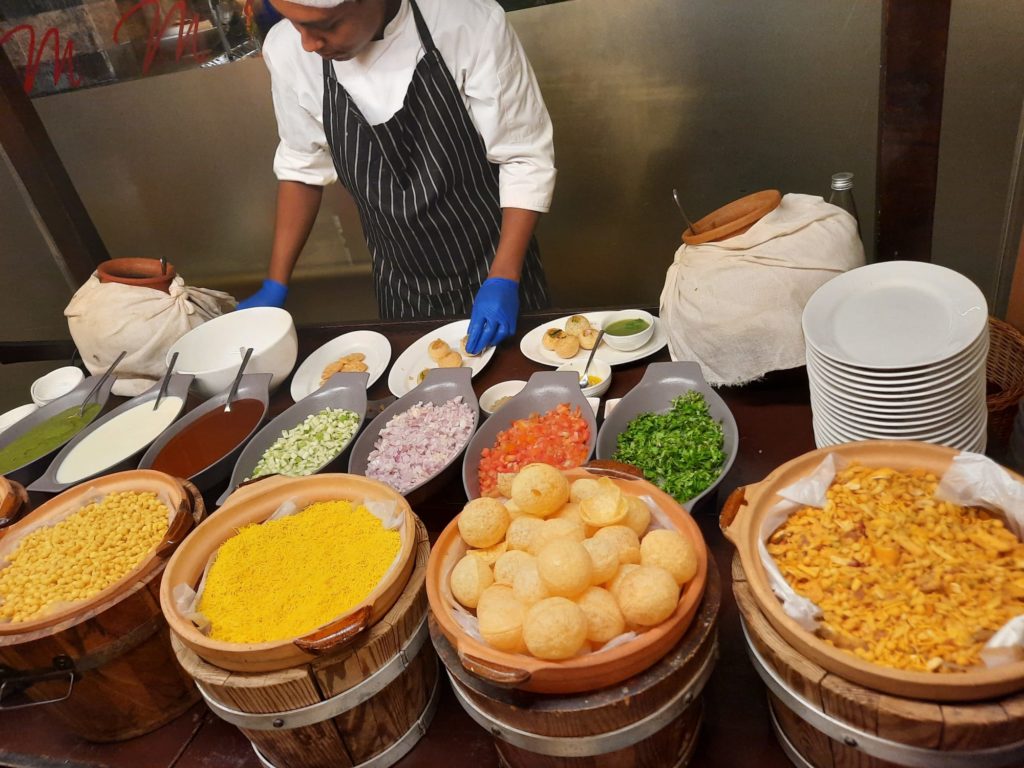
Food And Drink In Bengaluru
And finally, a section on food and drink. I ate really well in Bengaluru, and would categorise that into two (or maybe three) types of food. There were the local specialties, opportunities to try pan-Indian food experiences (or restaurants specialising in cuisines from other Indian regions), and Western-style restaurants and bars. Sometimes you can effectively combine a modern restaurant with local dishes with a high end cocktail: more on this in my recommendations at the end!
Top of most local people’s recommendations for specialities to try is a South Indian breakfast. There are three key dishes: dosa, idli and sambar. Dosa is a thin pancake made of fermented, ground lentils and rice (tastes much better than that sounds). A masala dosa (top image above) will have a scoop of vegetables, typically potatoes and carrots, wrapped up inside. Idli is a steamed rice cake the size of your palm, also containing rice and lentils. If you order either, they typically come with sambar, a vegetable stew with a tamarind broth. It’s a tasty way to start the day. Most local hotels will serve these options in their breakfast buffet. Or you can try a local café and also have the experience of a hot coffee or masala chai ladled out of a big steaming vat.
In terms of other local dishes, I found it a little hard to decipher which dishes come from Bengaluru and Karnataka. Enter my pick of local restaurant:
Oota Bangalore brings together dishes from around Karnataka. The menu was painstakingly researched, taking inspiration from different local communities. The results are absolutely delicious, and can be paired with a fancy cocktail or two. I was delighted we found this restaurant, and 100% recommend it to all.
Oota Bangalore
Many dishes at Oota centred on mutton, with coconut, mango and prawns also featuring frequently. It’s one floor above a more established restaurant, Windmills, which we also tried for cocktails.
In terms of other Indian cuisines, there are many good choices amongst hotel restaurants. My picks are North Indian restaurant Terracotta at the Vivanta, or the restaurant at the Marriott which is multi-cuisine, but will specialise according to the calendar. There was a festival on when we were there which meant Keralan food: lots of yummy fish and coconut. The Marriott was also a good place to try pani puri without taking a risk with street food (bottom image).
Food and drink are such a great way to experience a place. My culinary experience of Bengaluru matched my tourist experience in many ways: welcoming, vibrant, colourful and memorable.
Trending
If you see this after your page is loaded completely, leafletJS files are missing.

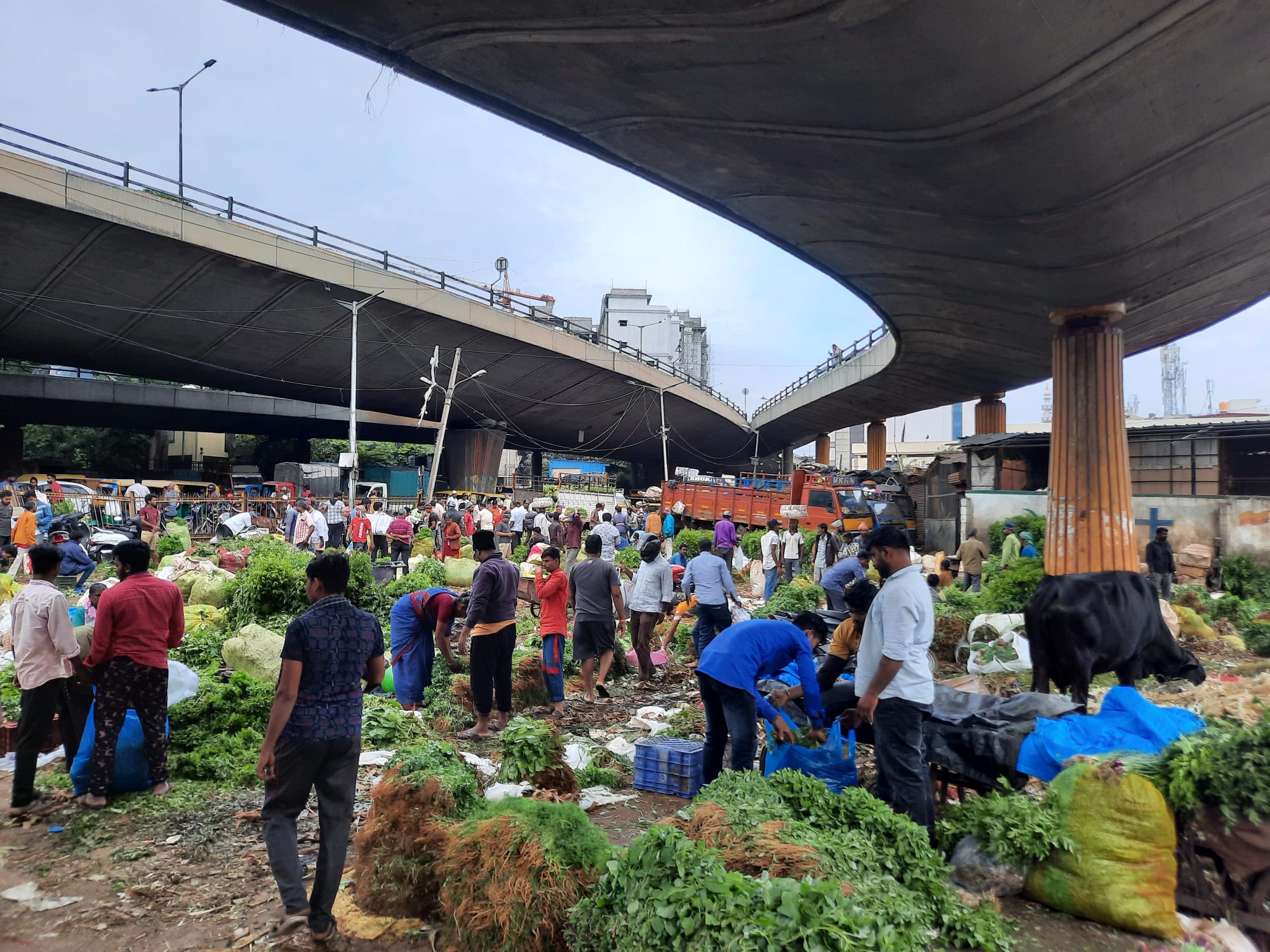
Bengaluru is built in 1537 AD by Kempegowda I. Not in 890 as mentioned in the article
Thank you, I have made the edit!
Exploring Bengaluru in just 24 hours is quite the adventure! From the vibrant markets of K. R. Market to the serene Lal Bagh and historic Bangalore Palace, every corner of the city offers something unique. Your detailed guide makes me want to plan my own visit soon, and I’ll definitely consider using HousingBuddy to make the most of my time there. Thanks for the insightful journey through Bengaluru!